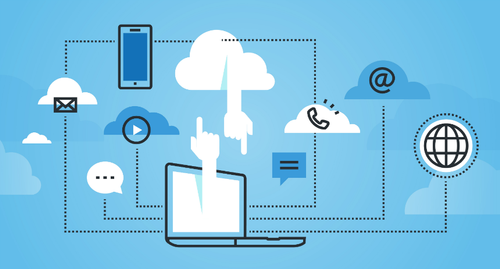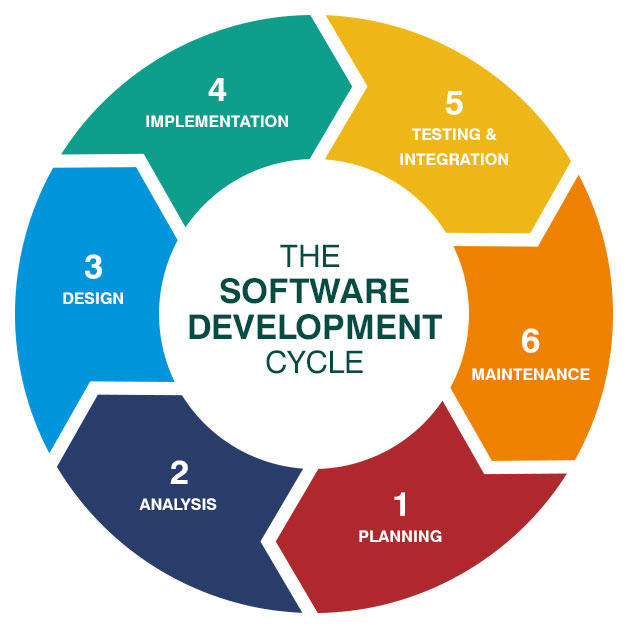Application & Project Management
We improve the management of our clients’ application and projects, ensuring the progression of their businesses.
Application Migration
PowerMigrator, an innovative Legacy Application Migration Tool was designed to alleviate these challenges, by efficiently and cost-effectively migrating your legacy applications to newer technologies. A proven Cloud Enablement and Modernization Platform, PowerMigrator helps enterprises to automatically convert and migrate their applications written in PowerBuilder, FoxPro and Visual Basic programming languages to .NET, Java EE and SOA technologies. In practice, PowerMigrator has proven to reduce the time and money spent on re-writing and migrating legacy applications by 30 to 60%.
Our end-to-end application modernization offering includes: Assessment, Migration, Transformation and Integration services, to assist your organization in transforming mission critical legacy applications quickly, while ensuring flexibility and scalability to address your business objectives now and in the future.

Specialized Migration Services made possible by PowerMigrator
- PowerBuilder to .NET
- Our PowerMigratorTM tool automatically creates .NET code out of the PowerBuilder code, making the conversion process practically bug-free and within the specified time limit.
- PowerBuilder to WEB
- We pride ourselves in the area of product reengineering and transforming legacy Client/ Server applications to multi-tier Java / J2EE technologies, which conform to the SOA principles. We pride ourselves in the area of product reengineering and transforming legacy Client/ Server applications to multi-tier Java / J2EE technologies, which conform to the SOA principles.
- PowerBuilder to Java / J2EE
- Strategic Advantages of Automated Legacy Migration System
PowerBuilder, Visual Basic and FoxPro Applications to .NET
Our PowerMigrator tool automatically creates .NET code based on existing PowerBuilder code, reducing the time and effort required during the conversion process.
PowerBuilder to WEB
VisibleStars has significant expertise in the area of product re-engineering and transforming legacy Client/ Server applications to multi-tier Java / J2EE technologies, which conform to SOA principles.
PowerBuilder, Visual Basic and FoxPro Applications to Java / J2EE
Migrate your PowerBuilder client/ server application to a J2EE environment, while retaining the look and feel, and functionality of your original application. Our automated process is inexpensive with a faster time to market.
PowerBuilder to VB.NET
PowerMigrator for VB.NET – VisibleStars’s PowerMigrator tool migrates legacy PowerBuilder Client/Server applications to VB.NET. The tool automatically generates the WinForm for GUI from PowerBuilder window and DataWindow objects with the same look and feel of the existing PowerBuilder application, offering user friendliness. The GUI code generation will drastically reduce the development time while migrating to the .NET platform.
PowerBuilder to ASP.NET
PowerMigrator for ASP.NET - VisibleStars's PowerMigrator tool migrates legacy PowerBuilder Client/Server applications to .NET. The tool automatically generates the WebForm for GUI from PowerBuilder window and DataWindow objects with the same look and feel of the existing PowerBuilder application, offering user friendliness. The GUI code generation will drastically reduce the development time while migrating to .NET platform.
Legacy Application Migration
Today, many companies are moving forward to migrate their legacy applications to latest technologies such as .NET/J2EE/WebSphere. Growing business need, increasing maintenance cost, fewer skilled resources on legacy technologies and limited delivery schedules - these are the major issues faced by the companies.
SmartPrise Migrator includes an automated migration utility that converts and migrates legacy applications to modern technologies such as .NET, Java EE, WebSphere, Oracle ADF and Fusion Middleware technologies automatically. It converts and migrates 40-60% of the existing legacy source codes to modern technologies retaining the value of its business logic components and providing savings around 65% of cost and effort associated with re-writing or manual migration.

Application Modernization & Migration
- PowerBuilder Migration, Cobol, Visual Basic and FoxPro Applications migrations to
- Microsoft.NET
- Java / J2EE
- PB to WEB
- SOA & Cloud-enabled WebSphere-based J2EE Technologies
Migrations to Oracle ADF/Fusion Middleware
- Legacy oracle forms to Oracle ADF/web-based applications
- Legacy oracle forms to Oracle ADF/web-based applications
- Oracle Pro C forms to Oracle ADF applications
- Legacy middleware applications to Oracle Fusion middleware
Value Proposition
- Strong expertise and migration experience with complex projects
- Endeavors to deliver quality solutions cost effectively
- Proven track record with safe and risk-free approach
- 100% customer-centric approach in all project management
- Talented and highly skilled IT resources
- Clearly defined deliverables at every stage of the project
Key Benefits
- Convert your legacy application to the current technology without any reinvestments
- Saves 30-50% of time and effort typically involved in re-write or migration of legacy applications and faster implementation services taking the product faster to market
- Re-usability of 50-60% of your legacy application codes bringing you regain the value of your old applications and reducing up to 30% of your capital investments on new technologies
- Automated migration processes with minimal human intervention owing to minimal or no errors
- Cost and Time savings over a complete re-write of the application
- Reap the benefits of three-tier architecture for enterprise-class Quality of Service
- BPM enablement for automated business processes providing more business flexibility and agility and optimized resource capitalization
- SOA technologies bringing in line the business and IT with greater interoperability and seamless interaction between the applications improving your business performance to newer heights
- Availability in cloud provides you with virtual infrastructure for green IT environment, cost effective pay-per-use model which is scalable to demand and gives accessibility to your host applications anytime anywhere from remote locations
- Virtualized environment drastically reducing your spending on infrastructure, support and maintenance cost and increasing your ROI
- With less capital investment, better application performance, automated business processes, resource optimization, reduced operating cost and faster time to market, your TCO is slashed by 40% and ROI is doubled within a short span
Application Server Migration
Our Application Server Migration Solution helps enterprises to migrate their Weblogic application server to JBoss Application server, where 40-50% of the migration process is automated. We help enterprises to reduce their IT budget and increase their returns through its Replacement Technology Practice for migrating the application servers to JBoss Application Server.
Our Application Server Migration is an end-to-end and cost effective solution for enterprises, which spending ransom on licensing and support and also finds many of the Weblogic Application Server features are not necessary for its business purpose.
Server Technology
Tomcat, Weblogic Application Server, JBoss Application Server, WebSphere Application Server Migrations
Key Benefits:
- Reduces your IT budget by 3-4 times in terms of license and support costs spent on Weblogic Application Server
- Saves you 50-60% of migration cost over re-writing
- Retains the business functionality and value of the application in JBoss application server by complete and comprehensive migration process
- Access to robust and user-friendly features of JBoss Application Server
- Multiple delivery models – On-premise, Cloud & SaaS-based deployments
- Faster to market, as most of the migration process involves automation
Queue Migration Services
We’ve now extended our Replacement Technology Practice for Queue migration services. SmartPrise Queue enables the enterprises to automatically migrate the ActiveMQ /JBoss MQ to WebSphere MQ services. This automation process saves 50-60% of cost involved in the migration process in terms of time and effort.
SmartPrise Queue is the MQ migration tool which helps to convert the inbound queues from ActiveMQ to WebSphere MQ. SmartPrise Queue provides a cost effective methodology and solution for enterprises which are finding hard to integrate their open-source based Queue solutions with various applications and business processes with limited technical support and upgrades.
Queue Migration
Jboss MQ/Active MQ to WebSphere MQ
Key Benefits:
- 40-60% of the migration process is automated
- Overcomes the constraints of shortage of skilled resources
- Automation and reduced manual effort saves you up to 50% of migration cost when compared to manual process
- Effectively addresses the time to market needs

